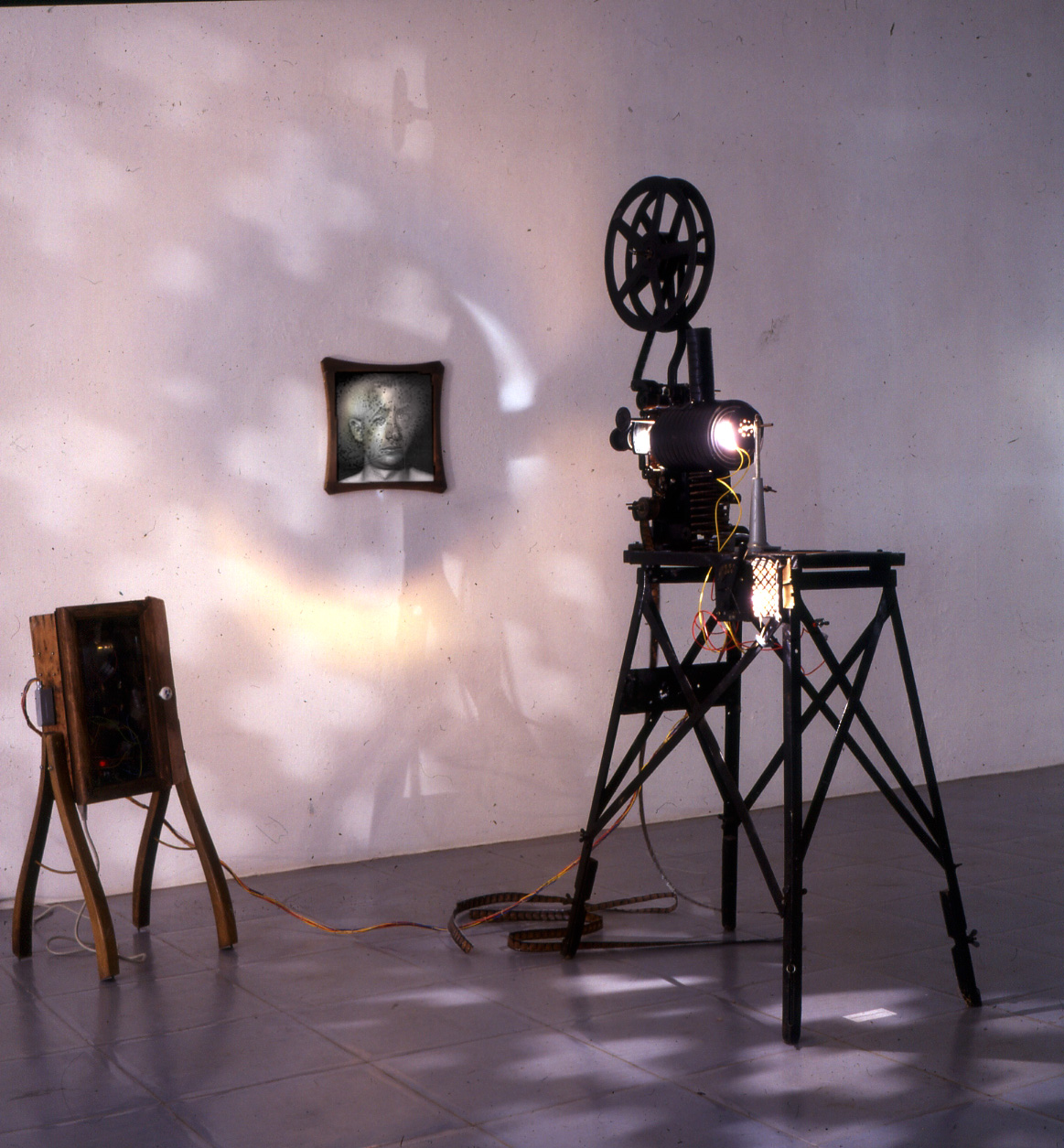Time Machine:

"Time Machine" (film burning machine)
film installation Lutz Garmsen 1996
The installation "Time Machine" consists of a
35mm cinema projector from 1910, which was manipulated in
such a way that the film images are not exchanged so quickly
as usual that the illusion of movement is created. Instead, each frame remains there for about 10
seconds.
The images, alternately portraits of a woman
and a man, remain in the hot light beam of the projector
until they start to deform and melt.
The celluloid stretches and bulges for about
ten seconds before flowing away. True
movement only comes to a standstill:
240 still film frames would be required to film
the destruction of a still film frame. It is not the illusion of movement:
The images actually move by being destroyed.
They create the illusion of depreciation of the
depicted.
"Zeitmaschine" (Filmverbrennungsmaschine)
Filminstallation Lutz Garmsen 1996
Die Installation „Zeitmaschine“ besteht aus einem 35mm
Kinoprojektor von 1910, der so manipuliert wurde, dass die
Filmbilder nicht wie üblich so schnell getauscht werden,
dass die Illusion von Bewegung entsteht. Stattdessen bleibt
jedes Einzelbild für etwa 10 Sekunden stehen.
Die Bilder, abwechselnd Portraits einer Frau und eines
Mannes, verbleiben so lange im heißen Lichtstrahl des
Projektors, bis sie anfangen, sich zu verformen und zu
schmelzen.
Das Zelluloid dehnt und wölbt sich etwa zehn Sekunden lang,
ehe es zerfließt. Erst durch den Stillstand entsteht
wahrhaftige Bewegung:
240 unbewegte Filmbilder wären nötig, um die Zerstörung
eines stillstehenden Filmbildes zu filmen. Es handelt sich
nicht um die Illusion von Bewegung:
Die Bilder bewegen sich tatsächlich, indem sie zerstört
werden. Sie erzeugen dabei die Illusion des Verfalls der
Abgebildeten.
